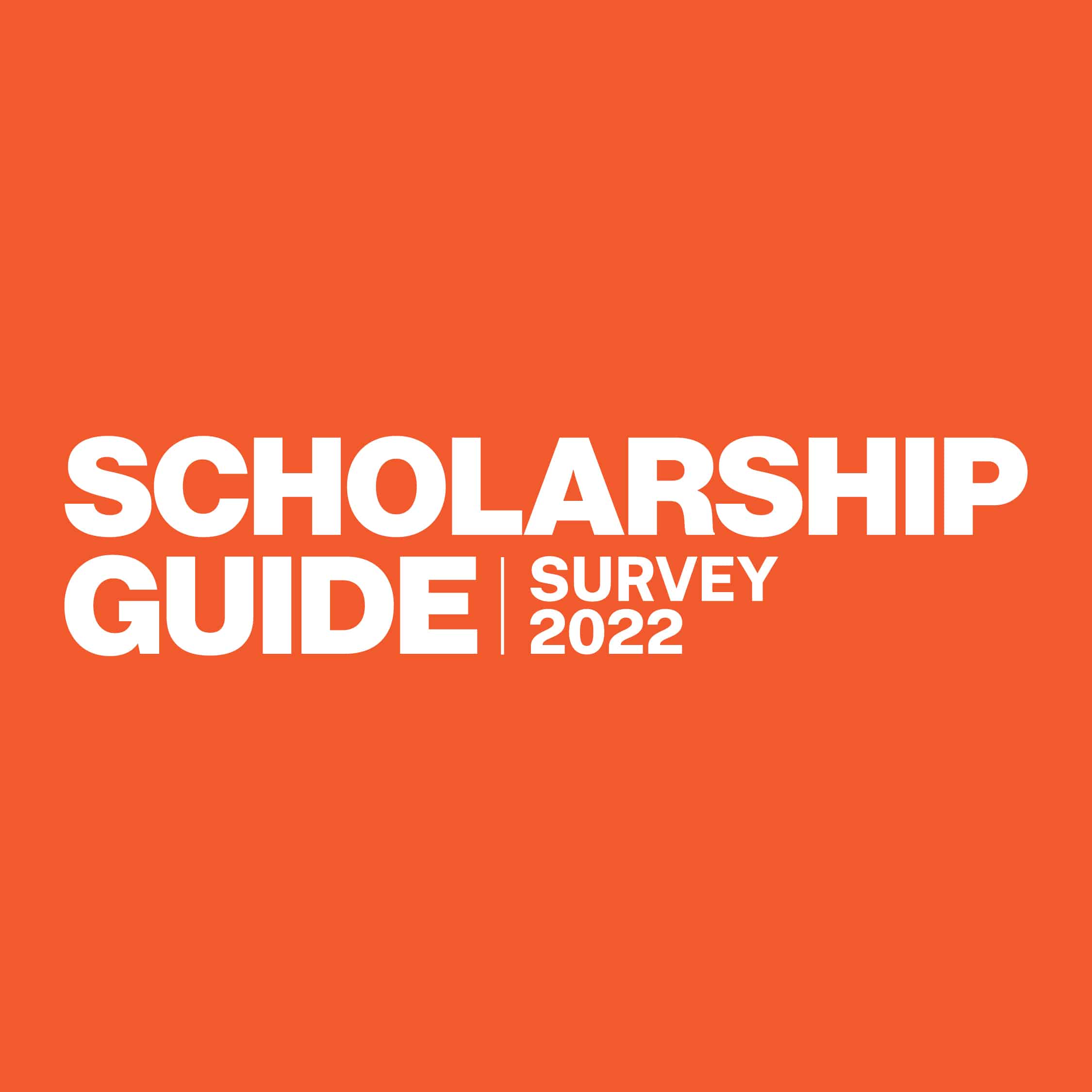Featuring the response of over 400 students, the annual Scholarship Guide Student Insights Survey gathers the preferences, priorities, and motivations of Singapore students on higher education and scholarship topics, exploring potential shifts in mindsets and industry trends.
While students can use these findings to guide their higher education decisions, schools and organisations can leverage these insights to improve their programmes and communication efforts to better support students in their academic journeys. We hope you will find the following survey extract useful.
Student Respondents’ Profile
Gender: 67% Female, 33% Male
Nationality: 85% Singapore Citizen, 9% Singapore PR, 6% Other Nationalities
Education: 59% Polytechnic Students, 29% GCE A-Level & IB Students, 8% University Undergraduates, 4% School Leavers / NS
2022 Key Survey Highlights
- As the world leaves the pandemic behind, more students are planning to study abroad. This time, Australia outperforms the United Kingdom to become Singapore students’ most favoured destination for overseas education.
- Students’ course preferences reflect a fusion of interest in both the sciences (technology) and the arts (business), a combination that looks to bring promising tech leadership and innovation potential to Singapore’s future.
- In seeking solutions to fund higher education, students are displaying greater financial independence than before. More students are inclined to work and study at the same time to finance their education or even depend on work-sponsored funding to cover their study expenses, suggesting the emergence of an expanding pool of working students in the future workforce.
- Scholarship interest has unfortunately dipped slightly year-over-year. The lack of information continues to be the primary reason students are not applying for scholarships, and the bond duration is a growing barrier. However, students are more willing to accept a longer bond if the award value is attractive and the scholarship promises a future career that meets their interests and offers excellent job mobility.
- Students’ choice of top 20 scholarship providers comprises a mix of organisations from the education, healthcare, and technology sectors, an indication of the key industries that will shape Singapore’s future. SingHealth, the Smart Nation Scholarship (by CSA, GovTech & IMDA), the Health Promotion Board (HPB), the Singapore Institute of Technology (SIT), and the Monetary Authority of Singapore (MAS) are some of the scholarship providers that have earned soaring popularity over the last year.
- Students have become more diligent about their scholarship prep work, starting their research as early as in their first year of junior college, International Baccalaureate, or polytechnic. However, students have feedback that when they search for scholarships online, the chances of them not yielding the results they want from their search can be more than two out of ten times, a rate that is 50 per cent more than the previous year. Knowing this issue exists, organisations may need to step up their digital marketing game to ensure that their scholarship information is easily accessible.
Intention To Pursue Further Studies
Nine out of ten students intend to further their studies. Whilst most of them would pursue a local education, the reopening of country borders and relaxation of travel restrictions around the world have encouraged more students to study abroad (2022: 21%; 2021: 16%).

The Local Education Scene
All six local universities manage to maintain their popularity share year-over-year. Students’ top three university choices are still National University of Singapore (NUS), Nanyang Technological University (NTU), and Singapore Management University (SMU)

Nanyang Polytechnic (NYP) claims the reigning title of students’ top polytechnic choice in the 2022 survey, with Ngee Ann Polytechnic (NP) coming in second place, followed by Singapore Polytechnic (SP) in third. And students’ top three choices of private higher learning institutions go to the Singapore Institute of Management (SIM), Raffles College of Higher Education, and James Cook University (JCU) Singapore.
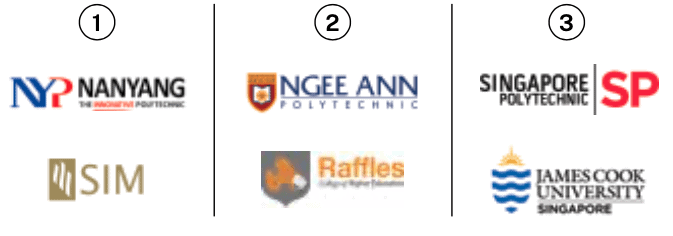
Top 20 Courses
Students’ course preferences reflect a fusion of interest in both the sciences and the arts, a combination that looks to bring promising tech leadership and innovation potential to Singapore’s future.
Just like in the year before, Business Administration, Banking & Finance, Social Sciences (Psychology/Sociology), Business Analytics, Accountancy, Data Science, Applied Science, Computer Science/IT, Medicine, Law, Marketing, Biomedical Science, Entrepreneurship, Communications/Media, Economics, and Life Sciences have made their way back into the top 20. Applied Science yields the most significant growth in rankings year-over-year, and Behavioural Science, Pharmacy, and Events Management are newcomers on the charts.
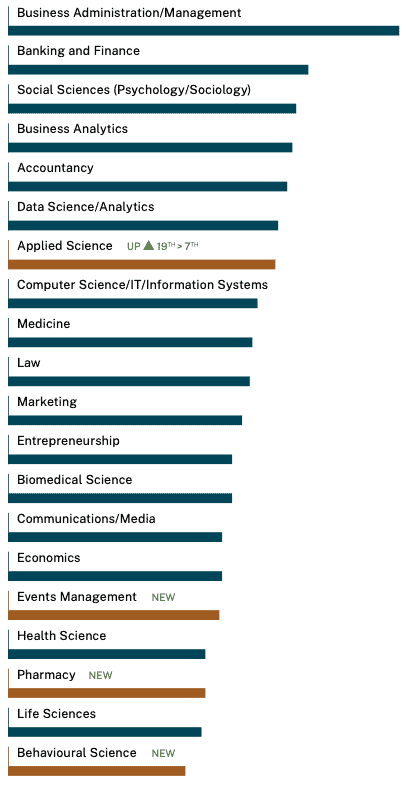
Studying Abroad
Australia outperforms the United Kingdom (UK) to become Singapore students’ most favoured destination for overseas education. The UK moves down to second place, followed by the United States and Canada. Destinations like New Zealand and Switzerland are also coming up more strongly on students’ preference radar.
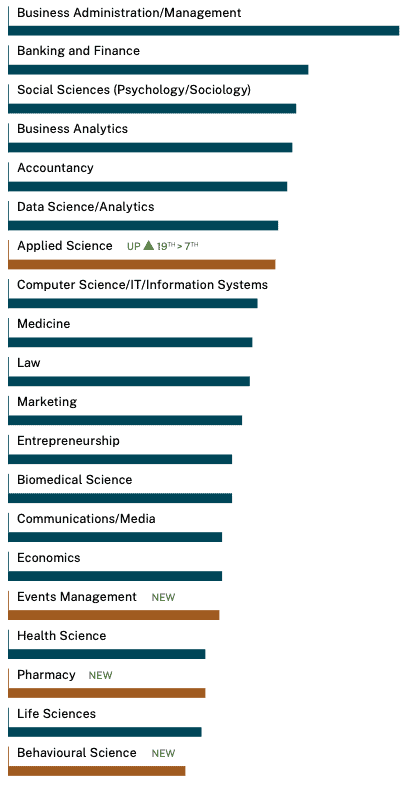
Choosing a University
Students fall back on the practicalities of admission requirements and course fees when deciding on a higher education institution. In the same way, affordability and quality of education are top considerations when evaluating options for overseas education.
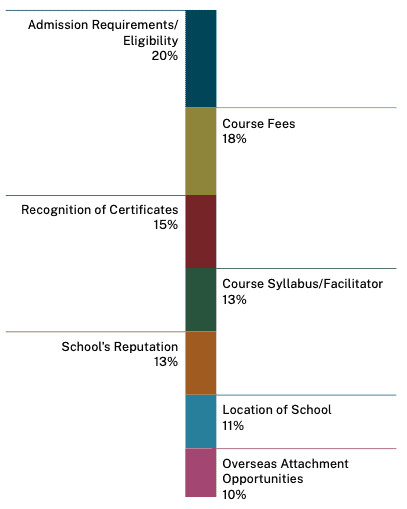

Financing Higher Education
In the last two years, relying on financial support from family has been students’ go-to option to fund their higher education. But now, more students intend to work part-time to cover their tuition fees; some even plan to get work to sponsor their education. There is also a growing interest in utilising the SkillsFuture Study Award to defray study expenses. These findings signal the emergence of an expanding pool of working students in the future workforce.
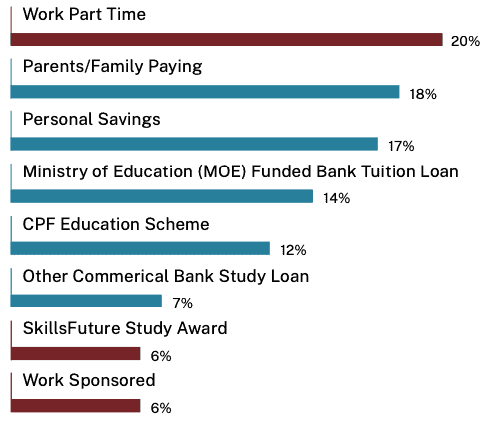
Scholarship Interest
90% of students intend to apply for scholarships; some have already applied. While the scholarship interest is high, it is, unfortunately, a dip from 94% in 2021.
The lack of information continues to be the primary reason students are not applying for scholarships. In this case, the onus is on both the providers and students. While providers are encouraged to increase their scholarship publicity and outreach efforts, students must also be proactive in researching scholarship information for themselves.
More and more students are also not considering scholarships because they think their academic grades do not qualify (2022: 23%; 2021: 20%), and they are deterred by the scholarship’s bond duration (2022: 12%; 2021: 9%). If providers wish to attract more applicants, they might need to relook at their programme requirements, put the word out that they are looking beyond grades, and communicate the versatility they are looking for in their candidates.
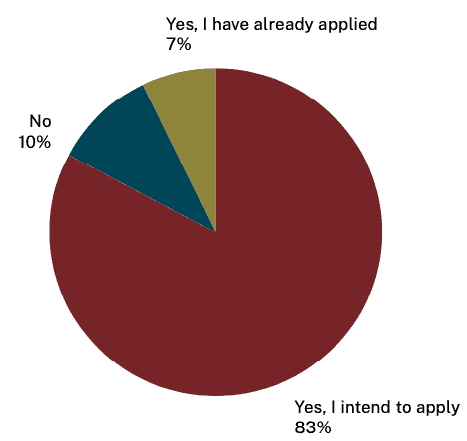
WILL YOU BE APPLYING FOR SCHOLARSHIPS?
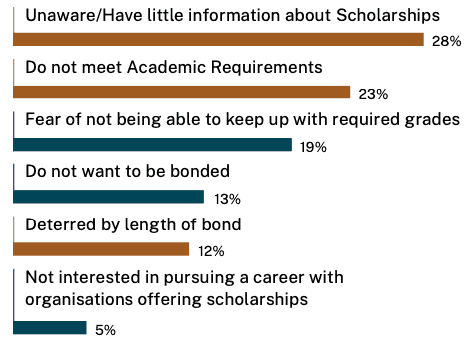
Scholarship Research
Students are increasingly diligent about their scholarship prep work, with more than 50% of the survey respondents indicating that they start their research as early as in their first year of junior college, International Baccalaureate, or polytechnic.
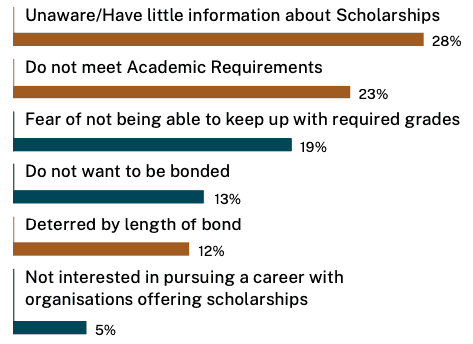
Internship continues to be the most important activity to help students prepare for scholarship applications, enabling them to explore career niches and develop professional skills.
Students also believe attending fairs and talks and reading scholarship-related articles can help them in their scholarship prep work.

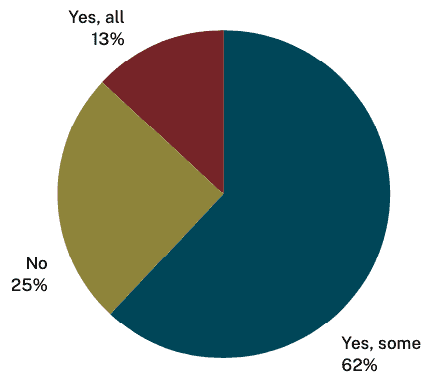
When students are interested in a particular scholarship, how do they search for it online?
Most students do a keyword search of the scholarship name or the sponsoring organisation. Most of the time, they would find what they are looking for. But, when comparing year-over-year, the chances of students not yielding the results they want from their search have increased by 50 per cent.
As such, providers must ensure that they have a dedicated career or scholarship section on their corporate website that is easy to navigate from external search engines and within their own website. It should also be user-friendly, mobile-optimised, and updated with the latest scholarship information.
As one of the leading and trusted sources of scholarship information for students, Scholarship Guide also endeavours to step up on compiling and maintaining the most comprehensive database of scholarships for easy access on its website and in the bi-annual Scholarship Guide magazine.
Evaluating & Choosing Scholarships
Evaluating scholarships requires the consideration of multiple factors. While students prioritise career opportunities with the provider and the course of study in their scholarship choice, the bond period has also become a growing and nagging concern.
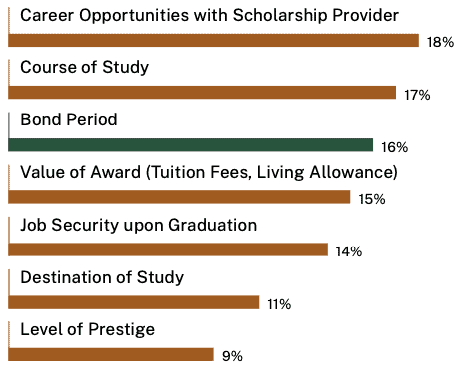
However, students are more willing to accept a longer bond if the award value is attractive and the scholarship promises a future career that meets their interests and offers excellent job mobility, such as exposure to various portfolios and career advancement.
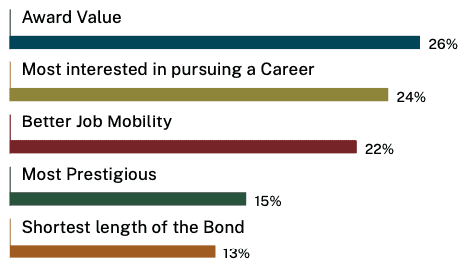
Where do students go to seek scholarship information and advice? Nothing beats a personal touch. Students reveal that advice from teachers, counsellors, family, peers, mentors, and the people they engage with at career fairs and talks would have the most impact on their scholarship decisions.

Top 20 Scholarship Providers
For three consecutive years, NUS, MOE, NTU, and A*STAR have been students’ choice of top scholarship providers. SingHealth, the Smart Nation Scholarship (by CSA, GovTech & IMDA), the Health Promotion Board (HPB), the Singapore Institute of Technology (SIT), and the Monetary Authority of Singapore (MAS) are some of the scholarship providers that have earned soaring popularity over the last year. As a result, some providers have been edged out from their former leading rankings. But by and large, students’ top 20 comprises a mix of organisations from the education, healthcare, and technology sectors, providing a good indication of the key industries that will shape Singapore’s future.
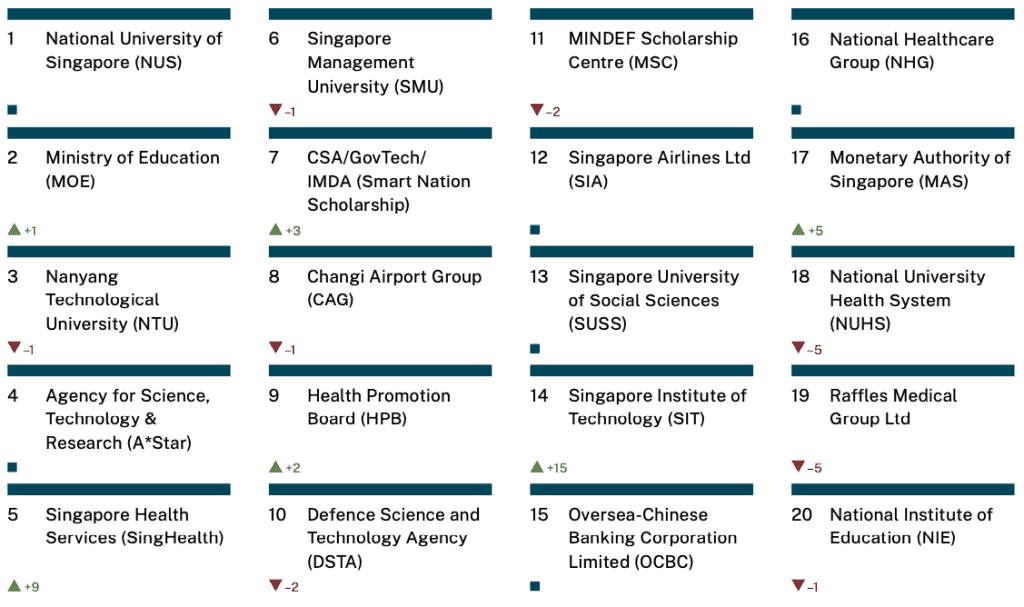
*Green and red markings on the chart indicate improvement or decline in rankings year-over-year. Rankings are solely based on respondents’ feedback. They do not represent Scholarship Guide’s views or endorsement.
The Bond Duration Argument
The bond for a full local scholarship is typically three to four years, while a full overseas scholarship could go up to six years. But for two consecutive years, students have expressed in the Scholarship Guide Survey that they want a shorter bond period or no bond at all.
There are about 180 bond-free scholarships available in Singapore, sponsored by over 15 organisations, including universities. However, playing devil’s advocate here, especially given the current times of expected economic slowdown, would it be worth considering committing to an organisation for job stability and security?


